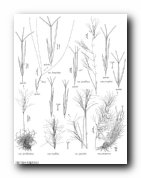
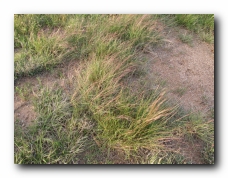
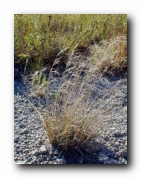
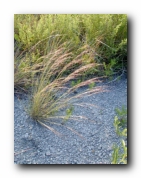
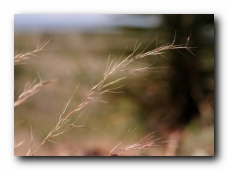
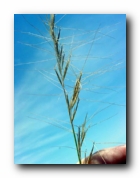
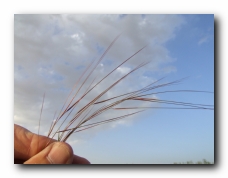
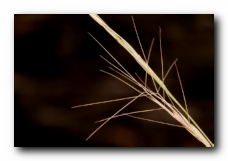
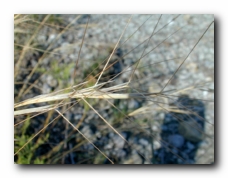
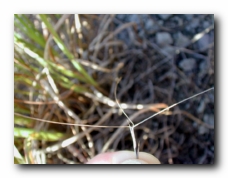
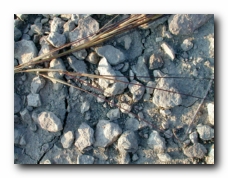
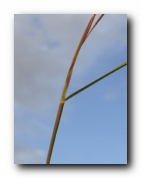
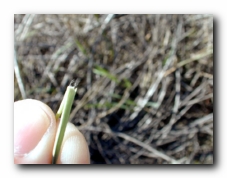
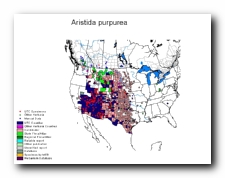
40" Rows:
Broadcast:
Sandy:
Loam:
Clay:
Habit: Tufted perennial.
Culms: 30-50 cm. tall, densely tufted, spreading, branched at the base
and often above.
Blades: Involute, scabrous above, 10 cm. long or less, 1-1.5 mm. wide.
Sheaths: Mostly longer than the internodes, lower often very rough, villous
at the throat.
Ligule: Pilose.
Inflorescence: Panicle nodding, narrow, loose, purplish, 10-20 cm. long, branches
capillary, flexuous,
naked at the base, bearing rather few slender-pediceled spikelets.
Spikelets: About 15 mm. long, 1-flowered, narrow.
Glumes: 1-nerved, acuminate, bearing an awn 1-2 mm., this often between
two slender irregular teeth, the first 6-8 mm. long, scabrous on the keel,
the second about twice as long, glabrous.
Lemmas: 9-10 cm., the pubescent callus less than 1 mm. long, the body
tapering to a scarcely beaked summit, tuberculate-scabrous in lines
from below the middle to the summit, triple awned, awns 3-5 cm. long,
nearly equal, very slender, finally widely spreading.
Palea: Thin, included by the lemma.
Habitat: Dry hills and plains. May-August.
Special Notes: